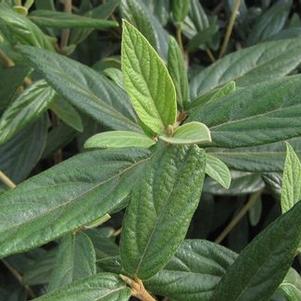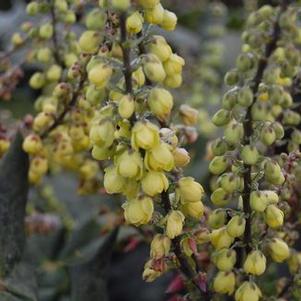Myrica pensylvanica
The dark green highly aromatic foliage of Northern Bayberry is semi-evergreen. It forms large colonies eventually. Myrica pensylvanica is especially useful in dry, salty sites. Native to northeast where it is primarily found growing along the eastern coast. Gray waxy fruit borne on female plants (dioecious) in late summer and remain through the winter so grouping several plants will increase chance of having a male plant to establish fruit set. Myrica pensylvanica is not sexed. (New name is Morella pensylvanica.)
Per Yale University: "American colonists boiled the berries to extract the sweet-smelling wax coating, which they used to make clean-burning candles. The wax coating on the northern bayberry fruit is indigestible for most birds, but a few species have adapted to be able to eat it, notably the yellow-rumped warbler and tree swallow in North America. As the wax is very energy-rich, this enables the yellow-rumped warbler to spend winter further north in cooler climates than any other American warbler if bayberries are present. The seeds are then dispersed in the birds’ droppings.
- Category:
Woody Ornamentals
- Hardiness Zone: 3
- Height: 8 Feet
- Spread: 4 Feet














